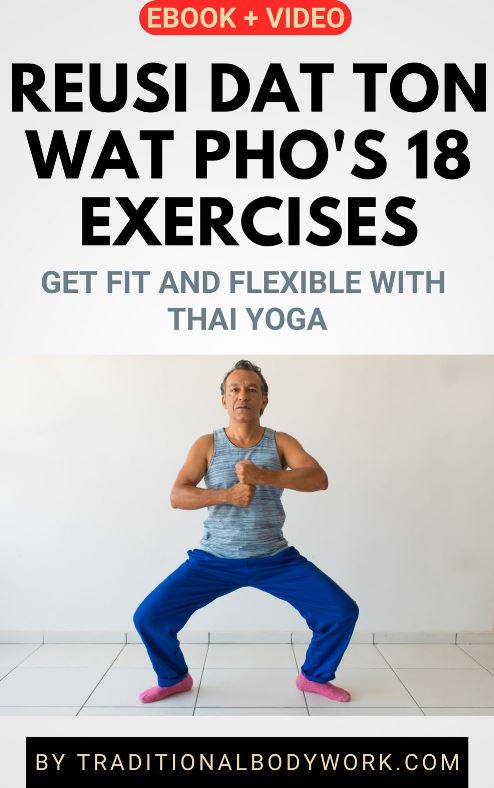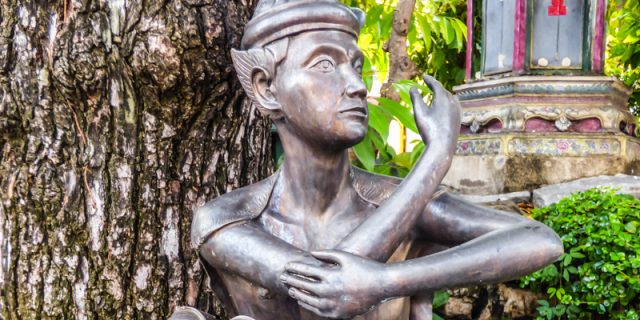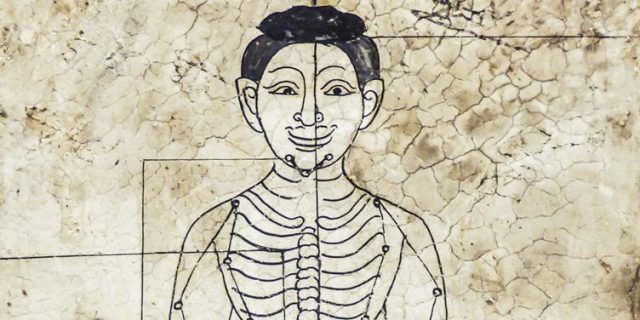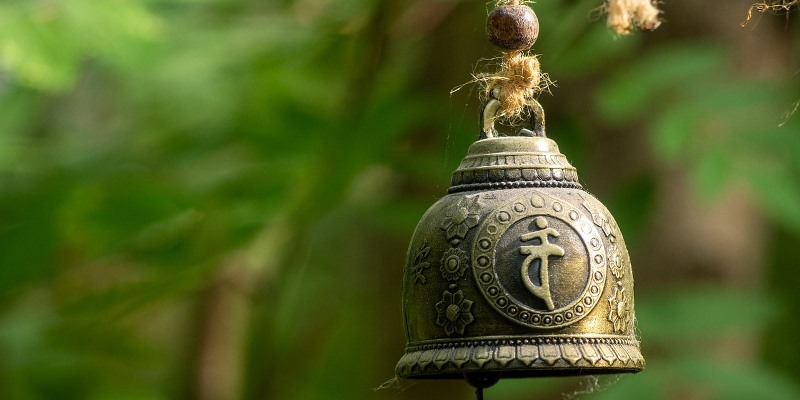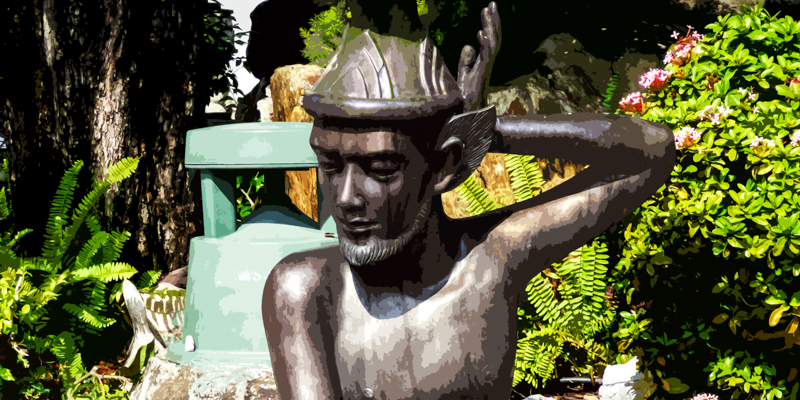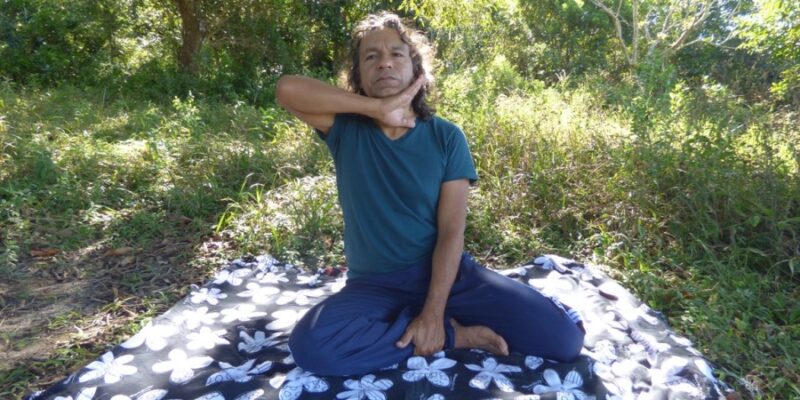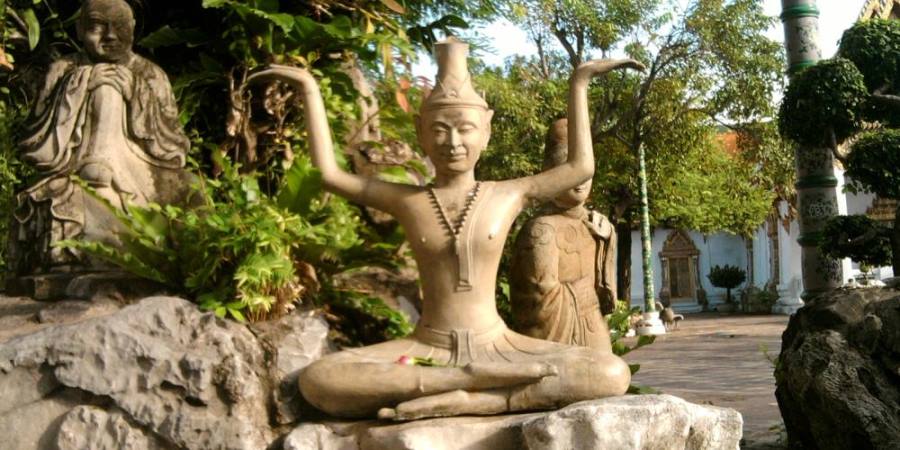
The Thai phrase “Reusi Dat Ton” has a specific meaning, where Reusi comes from the Indian Sanskrit Rishi and translates as Ascetic, Seer, Yogi or Hermit. Dat would mean to stretch or to train, and Ton refers to oneself.
Taken together, “Reusi Dat Ton” could be interpreted as “the hermit who stretches or adjusts himself.” About the origins and function of the Reusis in Thai society, the Hermits or Lersis, we’ve written in our post The Ancient Reusi Hermits from Thailand.
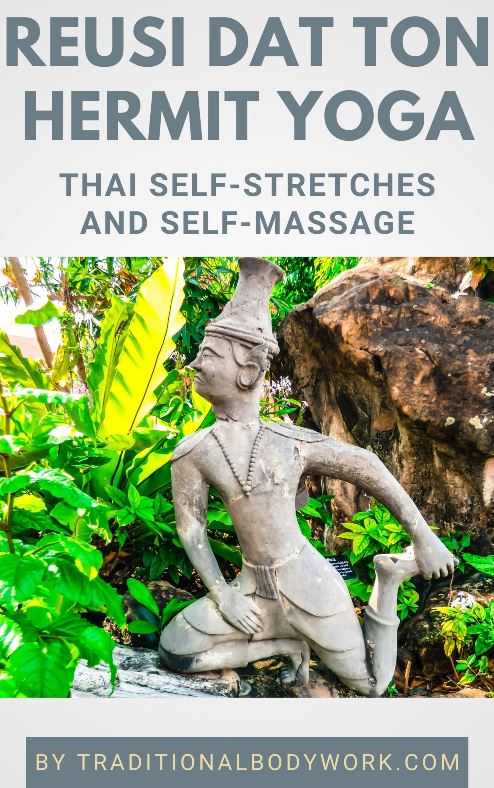
Some Reusi Dat Ton poses and techniques are rather similar to those in Indian and Tibetan Yoga systems, and taken together with the diffusion of Buddhism around the 3rd or 2nd century BCE from out India throughout Southeast Asia, it seems plausible that Reusi Datton, at least partly, has its origins in those Yogic healing and exercise systems.
Nevertheless, there are also a range of Reusi Datton techniques and practices that are quite unique, and for this it seems reasonable to believe that they have a Thai indigenous or other pre-Thai origin.
A common train of thought is that Reusi Datton is the source of Traditional Thai Massage. It’s said that the ancient Reusis through their own experience gathered knowledge about the various body layers in human beings, about functional acupressure points and energy flows, and so on, by manipulating the physical, mental, emotional and energetic body with pressure, massage, poses and postures to achieve health benefits.
It’s further said that, in the course of time, the Reusis started to apply these postures, poses and exercises on others, and that was perhaps how Thai Massage has come into existence.
Although there are ancient depictions of Yogis and Reusis in certain Yogic positions to be found in Thailand dating from the first millennium CE, it’s only evidently clear as from 1788 that the practice of Reusi Datton actually and factually already existed before that time.
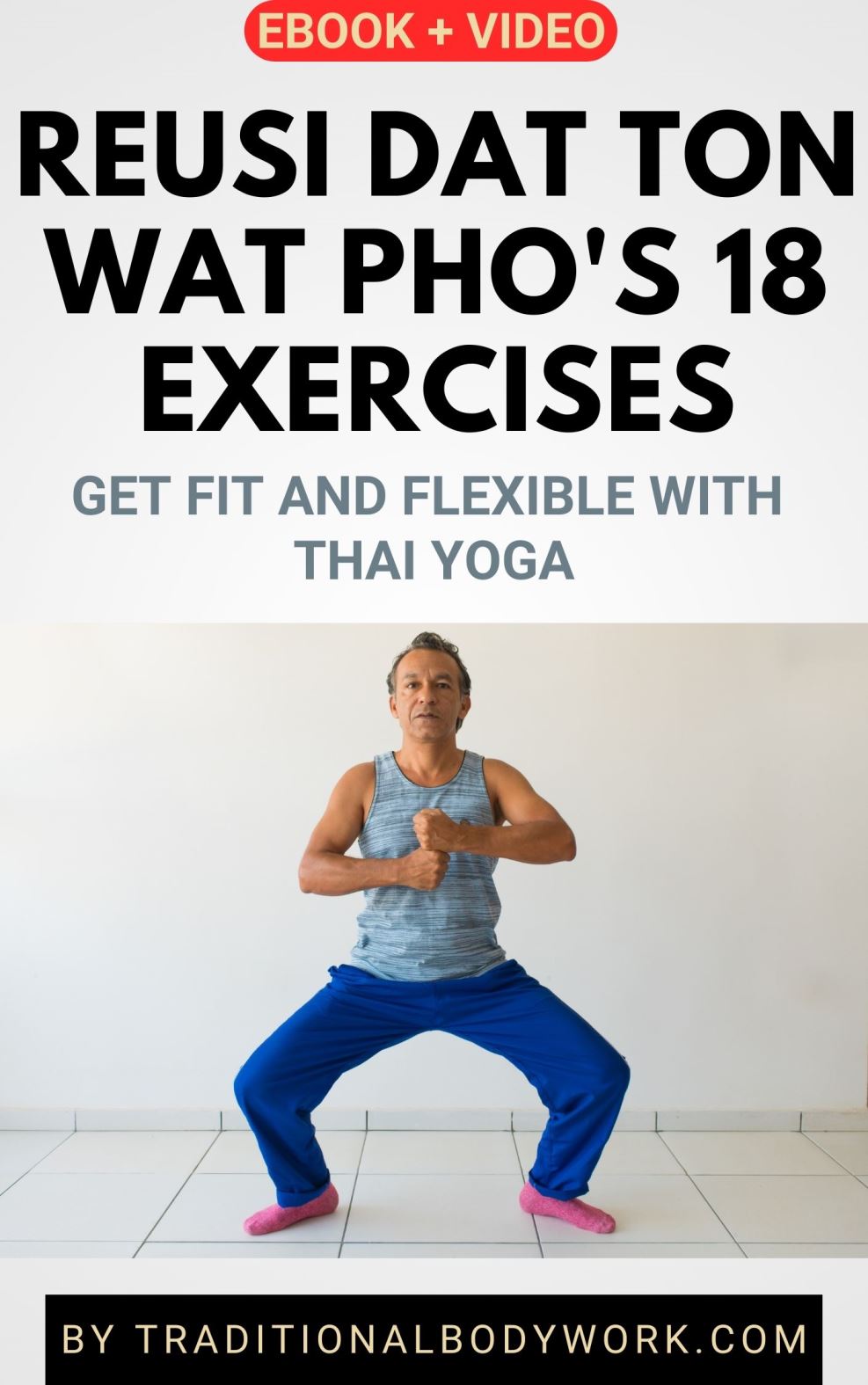
In 1782, the Thai King Rama I started a project to revive Thai cultural, scientific and Thai Healing Arts knowledge in the new Thai capital (now Bangkok) after the loss of the former Thai capital Ayutthaya in 1767. The reason to this was that the Burmese armies had completely destroyed Ayutthaya, and with that much of the written knowledge of Thai cultural wisdom got lost.
The King appointed an ancient, already existing temple called Wat Potharam, (today known as the Wat Pho temple) to become the place of a new Royal temple, and as part of this project, he ordered the creation of a set of clay Reusi Datton statues (the Contorted Hermits) showing various Reusi Dat Ton techniques and poses.
At the end of the 20th century the Watpo Temple together with the Watpo Thai Massage School, and also the Institute of Thai Traditional Medicine (ITTM) developed adapted Reusi Datton exercise sets for the general public meant as a broader introduction and promotion of Reusi Datton in Thailand. At the same time the idea was to supply the nation with safe and easy to do exercises for illness prevention, fitness, and stress-relief.
Today, both Reusi Datton practice and training is again growing, in Thailand and around the world, although it still remains a rather unknown Thai healing and exercise modality.


